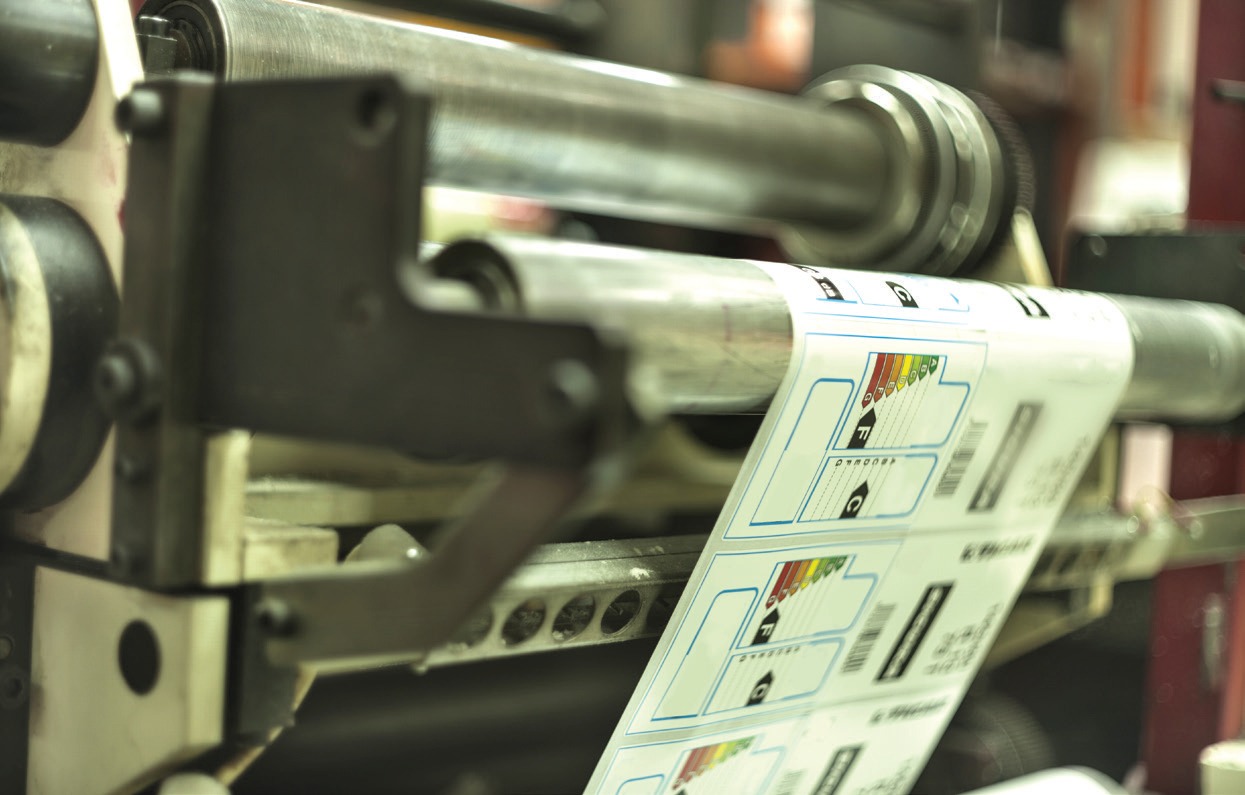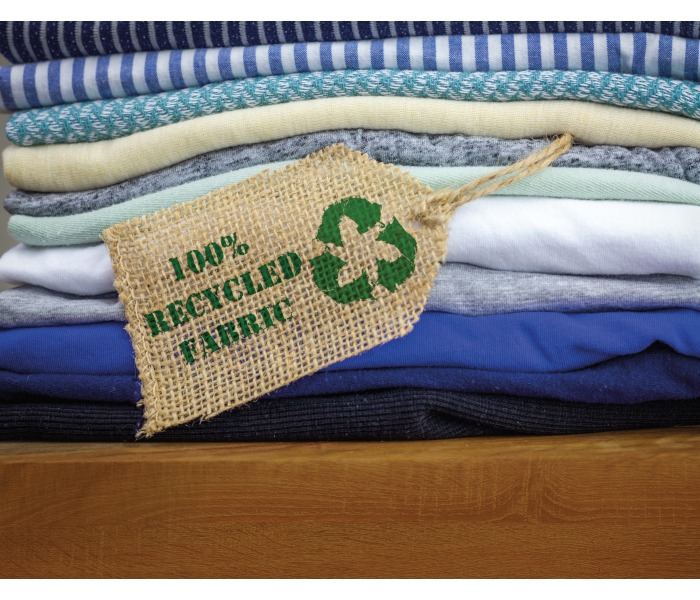The labels industry is striving to become more sustainable through a joined-up consortium of major players, known as CELAB. Mike Backnin talks to Brian Lawrence, CELAB’s work stream leader for membership and communications, and also director of business development for circular economy at the packaging and consumer goods division of Henkel Adhesive Technologies, about the new organisation’s work in elevating the importance of recoverability and recyclability.

The public are more tuned in to sustainability issues surrounding packaging than ever before. Thanks to economic booms in countries like India and other emerging economies around the world – as well as increasing demand for convenience everywhere –the packaging sector has enjoyed a prolonged period of growth over the last decade. However, that has meant widespread use of single-use packaging, which has left its mark on the environment.
But two major challenges remain largely unresolved. First, large volumes of packaging still cannot be recycled within existing recycling systems – this is a particular problem for multi-material packaging that requires labour-intensive separation to have any chance of being reused or repurposed.
Second, recycling rates for packaging remain low, even in the world’s most advanced economies. In 2018, for example, the 27 EU member states generated, on average, more than 175kg of packaging waste per head. Of this, around 140kg was recovered, and 115kg recycled. In response, regulators are making strong moves to ensure the packaging industry’s growth trajectory is sustainable in the longer term.
Likewise, fast-moving consumer goods (FMCG) companies and retailers are making bold commitments to improve the sustainable credentials of their packaging, moves that are opening new doors for manufacturers in the supply chain. Indeed, there are big opportunities for the labels industry to cash in on the circular economy as well.

Self-adhesive labels are the most commonly used variety in the labelling industry, meeting a wider range of end-user requirements more effectively than any other form of labelling. They need to cover a number of applications where the self-adhesive needs to adhere to many different surfaces, such as glass, plastic, paper, textiles, wood and metals.
While the sustainability of such labels may not command the same level of consumer consciousness as the packaging containers or materials they are attached to, these integral elements of a product do carry their own significant waste trail. Around 60 billion square metres of laminates with silicone liners are produced every year, with less than 5% being reused or recycled. Additionally, label converters typically waste anywhere between 5% and 10% of the original laminate during production and handling processes. As with the wider packaging market, the labels subsector is also enjoying a steady period of growth.
In 2020, Research and Markets’s estimation of the global self-adhesive labels market was $46.5bn, a figure set to rise to $59.2bn by 2025 thanks to an expectedly buoyant compound annual growth rate of almost 5%.
This will inevitably place pressure on industry players to reduce waste production as their outputs grow – the challenge is complex, but one that many organisations are willing to tackle head on.
Confluence of waste
“The challenge to making the label industry more circular is multifaceted and related to where the components become waste,” says Brian Lawrence, director of business development for circular economy at the packaging and consumer goods division of Henkel Adhesive Technologies.
“For the liner, it is at the label user’s operation – for example, the factory. For the matrix, it is at the printer while the label stays with the product, until that enters the waste stream.
“Another important challenge we see in both Europe and North America is the logistics of getting the material from the place where it becomes waste to the recycler. This is due to used release liners being a small waste stream for the label user relative to other waste streams that need to be managed, as well as the fact that the volumes can be very fragmented and need to be collected all over Europe and North America.”
As well as driving circular economy initiatives within Henkel’s labelling business, Lawrence also serves as work stream leader for membership and communications for CELAB, a recently established consortium geared towards transitioning the labels sector to a sustainable future.
It is the brainchild of Avery Dennison, which organised a meeting of stakeholders in the self-adhesive label industry in October 2019 to address matrix and release liner recycling. It was realised that a joined-up, industry-wide and global effort was required.
“At that initial meeting,” Lawrence recalls, “participating companies, including Henkel, discussed the vision, objectives and structure of a global effort, and began inviting other companies to join a consortium to address this important issue.
“The consortium named the group ‘CELAB: Towards a circular economy for labels’. For Henkel, this effort parallels its commitment to circular adhesive solutions to align the industries it serves with sustainable end-oflife options for challenging applications.”
CELAB operates as an ad hoc group empowered to reach across the entire supply chain, leveraging the expertise of its member companies to promote a circular economy for self-adhesive label materials. It is dedicated to building a sustainable self-adhesive label industry, creating greater circularity for associated products by enhancing and promoting matrix and release liner recycling around the world. Indeed, in light of the aforementioned challenges raised by Lawrence, the consortium is prioritising its work on the paper liner – this is because it is the largest volume material, and some pathways to recycling it already exist. Meanwhile, to address the logistical challenges, CELAB’s branches in Europe and North America are working on identifying different collection streams and systems to make them more easily accessible to all pressure-sensitive label users. The more material that is collected, the more cost-effective the collection process for recyclers.
“CELAB maintains regional branches in Europe and North America, with plans to expand to other regions in the future,” adds Lawrence. “Our initiatives and activities are coordinated across a global consortium, which ensures that communication and best practices are shared between the regions.
“This structure is designed to accommodate the differences in production processes and recycling capability in each of the regional markets. Work streams are organised to address various aspects of matrix and release liner recycling, including analysing technical issues, promoting the use and creation of recycling networks and solutions, interacting with government regulators and developing educational materials for both industry and public.”
Knowledge is power
Indeed, sharing knowledge is absolutely critical to the successful completion of CELAB’s mission, which, inevitably, has been disrupted by the pandemic of 2020. Global lockdowns have presented immense commercial and practical challenges. But despite this, the consortium has steadfastly continued to work towards its goals.
“Starting a global consortium at the onset of the Covid-19 pandemic has certainly extended our targets and timelines,” Lawrence admits. “The pandemic, however, has created unique challenges for all industries, and how we interact as a consortium has evolved with technology. We have full commitment from our members to work to accomplish our mission, and that is reflected in the very active CELAB work streams that meet by video several times a month.”
The organisation’s core activities – sponsoring research, sharing information and education stakeholders, policymakers and the public through targeted communications – have continued to good effect. For example, in November 2020, it published a white paper titled ‘Label paper release liners: Paperbased silicone release liners from labels can and should be recycled’. It is designed to provide basic technical information on recycling on a global basis, and is framed around a review conducted by Alex Knott, senior scientist at Dow Chemical Company, which looks into release liner recycling and existing recycling technology. This release joined another CELAB research study, ‘Pressure-sensitive labelling release liner generation and recycling’, with another paper due to be released imminently, this time looking into the recycling of filmic liners.
“We are planning to conduct additional research and produce more publications,” adds Lawrence. “This will include case studies, interactive maps and other materials to educate industry members in line with our mission to create a more sustainable pressure-sensitive labelling industry by offering solutions and providing education to enable matrix and liner recycling.”
Such knowledge-sharing efforts will be crucial as the packaging and labels industries grow. According to market intelligence company Smithers, the value of the global packaging sector will increase from $917bn in 2019 to $1.05trn by 2024 (although those figures were published before the pandemic), growth that will be steered by several major trends.
Those numbers include rising real incomes in Asia and other developing regions, which will result in greater purchases of packaged products such as food, luxury goods and cosmetics. The shift towards flexible packaging will also continue, with high-barrier films and retort stand-up pouches displacing rigid pack formats like metal tins and glass jars. Key consumer-driven trends include the already cited demand for convenience products and a growing concern for health and wellness. Smithers expects the healthcare packaging market value to grow ahead of pharmaceutical consumption. Most significantly of all, however, is the continued focus on sustainability and pressure being placed on non-recyclable plastics. There is a growing appetite for more easily recyclable and sustainable packaging materials, and a reduction in what is seen as excessive secondary packaging. These consumer trends can and are being applied to strategic thinking in the labels category.
“The most important trend we are seeing is that companies in the pressure-sensitive label industry are more committed than ever to making our industry more sustainable,” Lawrence concludes. “We are very optimistic that CELAB can help achieve this goal by offering solutions and providing education to enable matrix and liner recycling.” CELAB’s work is only set to become even more relevant given how integral labelling is to product packaging.
Label lingo: release liner
A release liner is a layer in a label roll or sheet that carries the pressure-sensitive label material until it is ready for its next step – it is one of two typical waste components of labels. Also referred to as a carrier or backing, release liners can be film-based, paper-based, polycoated paper-based or metallised paper-based. Release liner substrates are usually coated with silicone, allowing the label to be released when required.
Label lingo: matrix waste
Matrix waste is the other of the two main label waste components, along with release liner waste. Matrix waste is created wherever labels are die-cut from a web of label stock – the amount of waste created depends on the shape, size and arrangement of the labels in the web. Although it is difficult to estimate, Herma believes that European converters currently generate around 7,300t of matrix waste annually.
